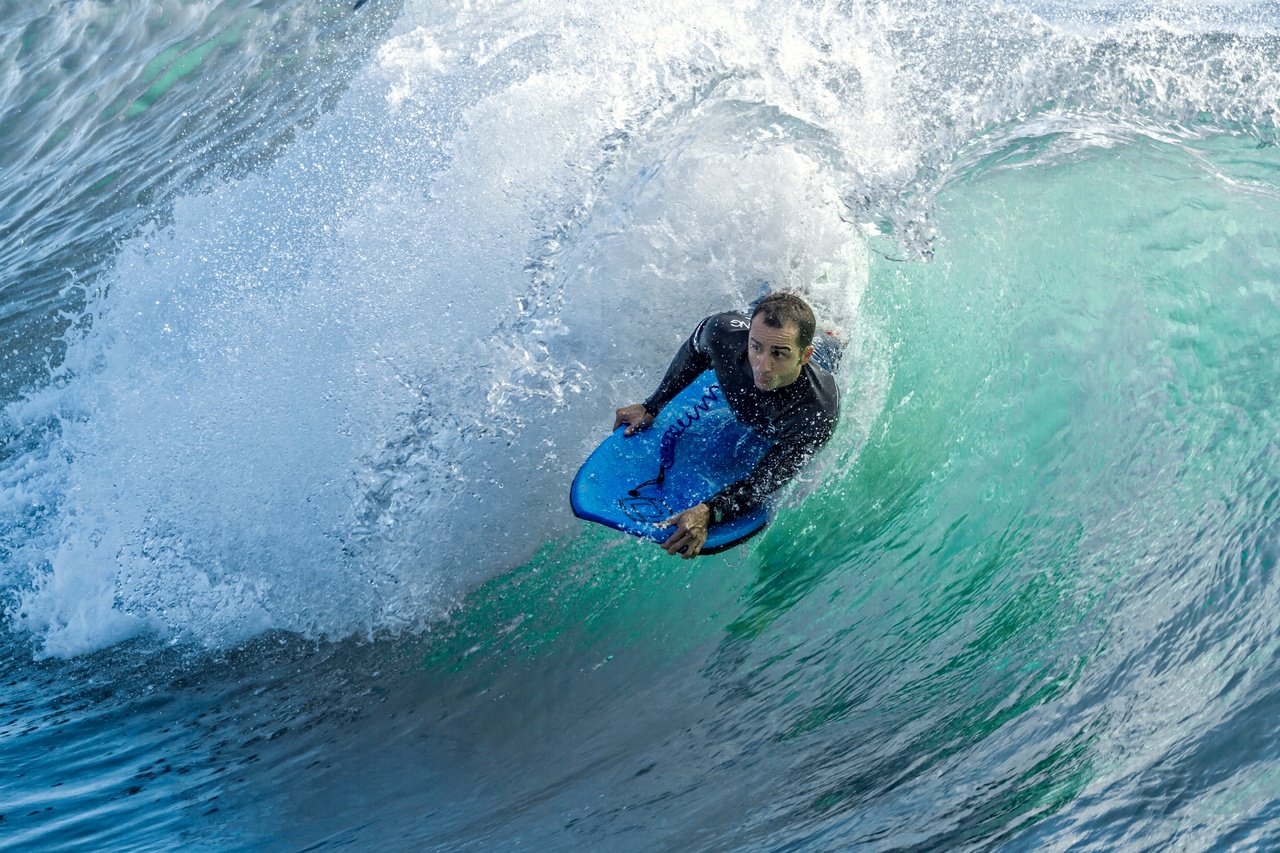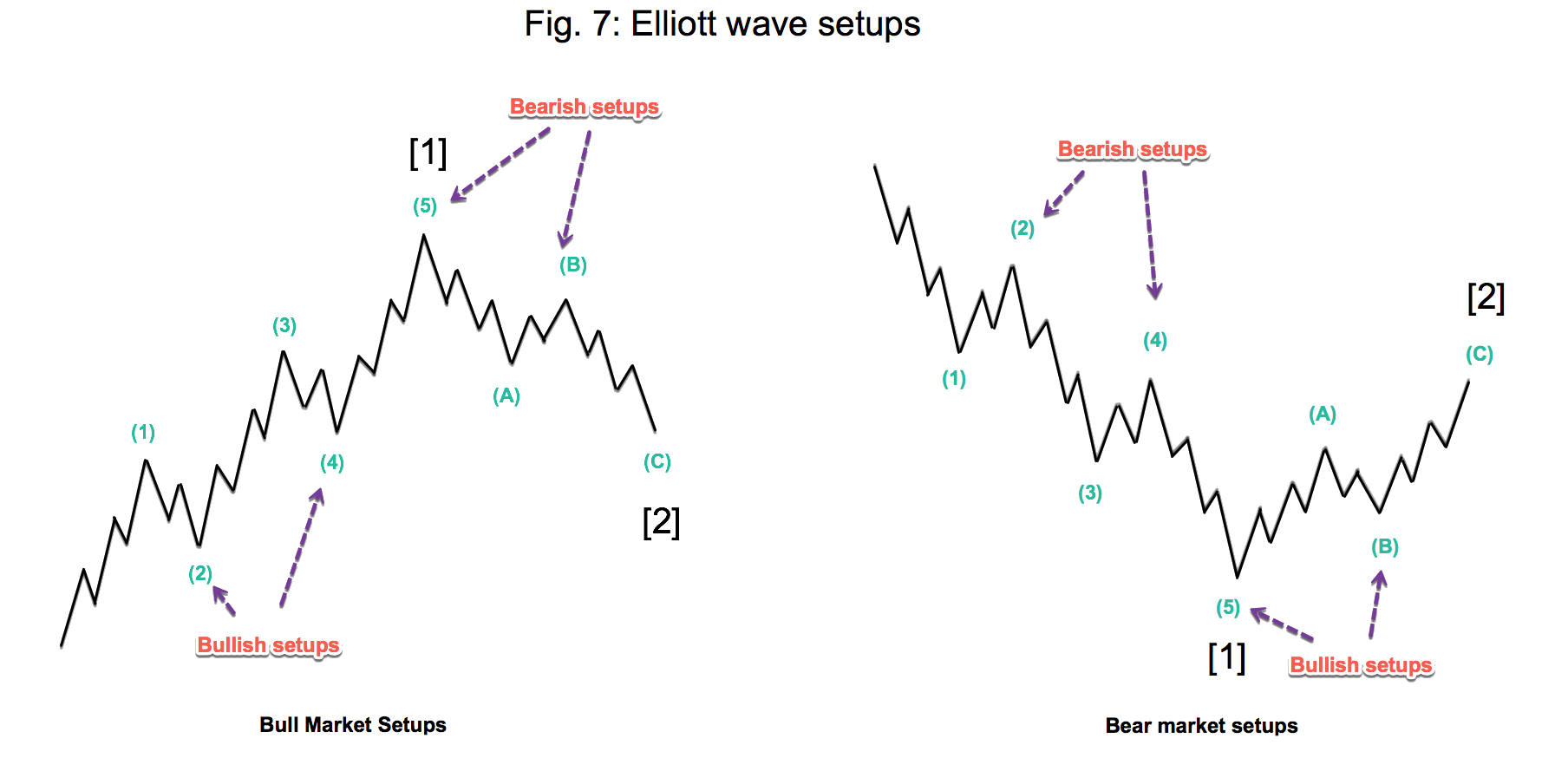On Trading with The Elliott Wave – The Basics II we continue analysing important aspects related to trading using the Elliott Wave.
Definition of price targets
Elliotticians assess Price targets using Fibonacci ratios and one to one projections in rising channels.
We will discuss Fibonacci and projections later in more depth. In Fig. 6 we see a projection example. The line from C to 1 is copied and projected into wave 3, starting at the end of wave 2. The length and angle are unchanged. We repeat the same projection ( because wave 3 ended just as forecasted by that line) to find the end of the 5th wave. In that case, we noticed that this wave had an over-extension and this projection fell short.
We do the same operation on corrective waves. On Fig. 6 we see an example by projecting the line on wave 2 to forecast the end levels and times of wave 4.
Specific invalidation points
Knowing when the trade scenario is no longer valid is the most critical piece of information a trader needs. The wave rules give specific levels at which that scenario has failed, and the count is invalid.
Three rules help us find those invalidation levels.
- Wave 2 can never retrace more than 100% of wave 1.
- Wave 4 should never end beyond the end of wave 1.
- Wave 3 can never be the shortest.
A violation of these rules implies that the wave count is invalid. That will help us determine if the trade has a reward worth its risk, even before entering the trade. We should avoid less than 1:1 reward-to-risk ratios, as discussed in the introduction to this article.
The most profitable waves to Trade
As we have said before, the most profitable waves are impulsive, because they follow the direction of the primary trend.
And, which waves in the total Elliott cycle are impulsive?
- These are 1, 3, 5, A and C.
Waves 2, 4, and B are corrective.
Particular care should be taken when trading wave 1 since the latest wave was an impulsive wave in the opposite direction. So, the pattern of trend change hasn’t been completely established. In this case, usually, wave 2 corrects almost 100% of its gains. Therefore, it’s better to wait until the end of a wave 2 pullback than risking too early on a wave 1 wannabe.
We should remember that a five-wave pattern determines the direction of the main trend, while a three-wave pattern is an opportunity to join the trend.
The profitable waves
Hence, the final count for profitable trading following the main trend are waves 3, 5, A and C.
Fig. 7 shows the Elliott Wave setups. To the left, the bull market setups, while to the right the bearish market version.
As seen above, these setups, except at the end of wave 5, are entries on the main trend pullbacks, at the end of corrective waves. That makes sense because we know that impulsive waves depict much higher rewards for its risk. The second consideration is that at the end of these waves we achieve our goal to optimize the risk-reward of trades, therefore, at least theoretically, are as perfect as an entry as they may possibly be.
Next article will present the typical theoretical setups using the Elliott Wave principles.
Take your trading to the next level with our 14 Day, No Obligation, Free Trial. You will soon discover why we are trading’s best-kept secret. We are successfully building the world’s largest group of profitable traders and would like you to be part of it.
You can join for as little as $19.99 per month, no contract, cancel anytime. Just one profitable trade each month covers this amount, the rest is pure profit. You will benefit from unparalleled access to our professional traders, our transparent trading performance, our LiveTradeRooms and access to the most comprehensive trading education on the market. What have you got to lose? JUST CLICK HERE TO GET STARTED NOW and see how real money is made!



